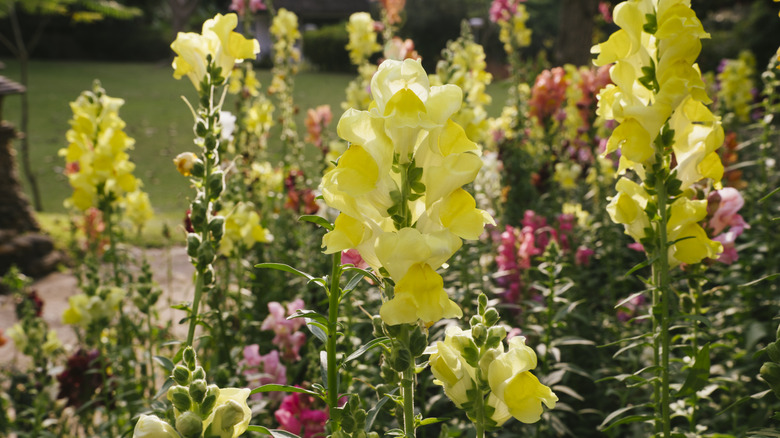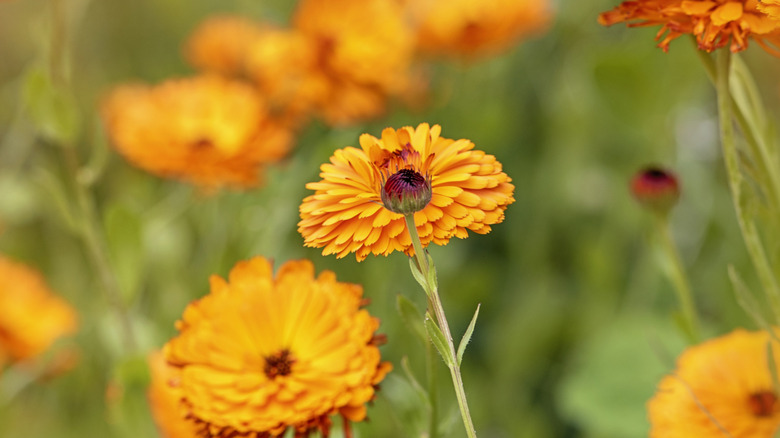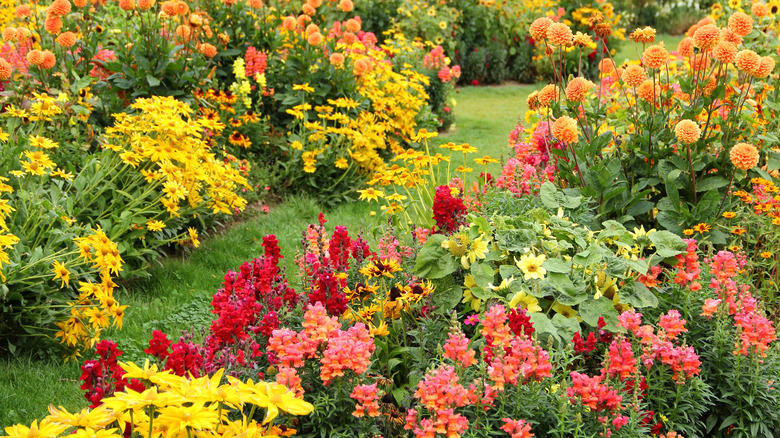Plant One Fast-Growing Flower With Snapdragons For Continuous Colorful Blooms
Snapdragons (Antirrhinum majus) are floral stunners that can turn any outdoor space into a whimsical cottage garden with their unique shape and delicate smell. As beautiful as they look alone, though, combining them with other colorful flowers can make an even more vibrant garden display. One fantastic flower to grow alongside your snapdragons is Calendula (Calendula officinalis).
With different flower shapes and textures that complement each other perfectly, snapdragons and Calendulas look great together. However, they also grow well together, as they thrive under similar conditions. Both plants are encouraged to grow back after you cut them, so as long as you enjoy them as cut flowers or deadhead, you'll have them blooming all season.
You won't have to wait long to delight in these flowers' blooms, since Calendulas are fast growing, often flowering within two months of sowing. Snapdragons take a bit longer, and bloom about three to three and a half months after sowing. While Calendula is generally available in shades of yellow and orange, snapdragons tend to have a wider range of colors, from whites, pastels, and creams, to bold reds and purples.
Caring for snapdragons and Calendulas in the garden.
While Calendulas and snapdragons tend to be grown as annuals, they're both technically short-lived perennials in zones where they survive winters. Calendula is winter hardy in zones 9 through 11, while snapdragons can survive the cold season in zones 7 through 10. Whether you plan to grow them as annuals or perennials, both plants should be grown in full to part sun.
While snapdragons need fertile, well-draining soil to thrive, Calendulas are less picky and can grow in a range of soil types. Neither plant is particularly drought tolerant, so be sure to water them regularly. Additionally, both plants prefer cool temperatures and may not bloom their best during particularly hot parts of summer. Calendulas, however, have a bit more heat and humidity tolerance than snapdragons. As long as you take care of your snapdragons and Calendulas, they should perk up once temperatures cool and provide you with more flowers for the fall. In warmer regions like Florida, these flowers will even last through winter.
Creating stunning flower beds and borders with snapdragons and Calendulas
Since Calendulas have an average height of around 2 feet and many snapdragon cultivars grow about 3 feet tall, it's best to situate the Calendulas in front of the snapdragons when you plant them. You could even grow shorter ground cover plants that thrive in flower beds, like native violets and geraniums, in front of your Calendulas. Because of their height, you may also need to stake the snapdragons so that the heavy flower stalks don't topple over.
These flowers aren't just beloved by people, either. Snapdragons are fan-favorites of hummingbirds, and Calendulas are huge hits with butterflies and other pollinators. If you've been planning to start a pollinator garden, planting snapdragons and Calendulas alongside other pollinator magnets — like rue — could be a great beginning. Adding even more flowers that attract pollinators will create a garden that's as beautiful to local bees, butterflies, and hummingbirds, as it is to you.


